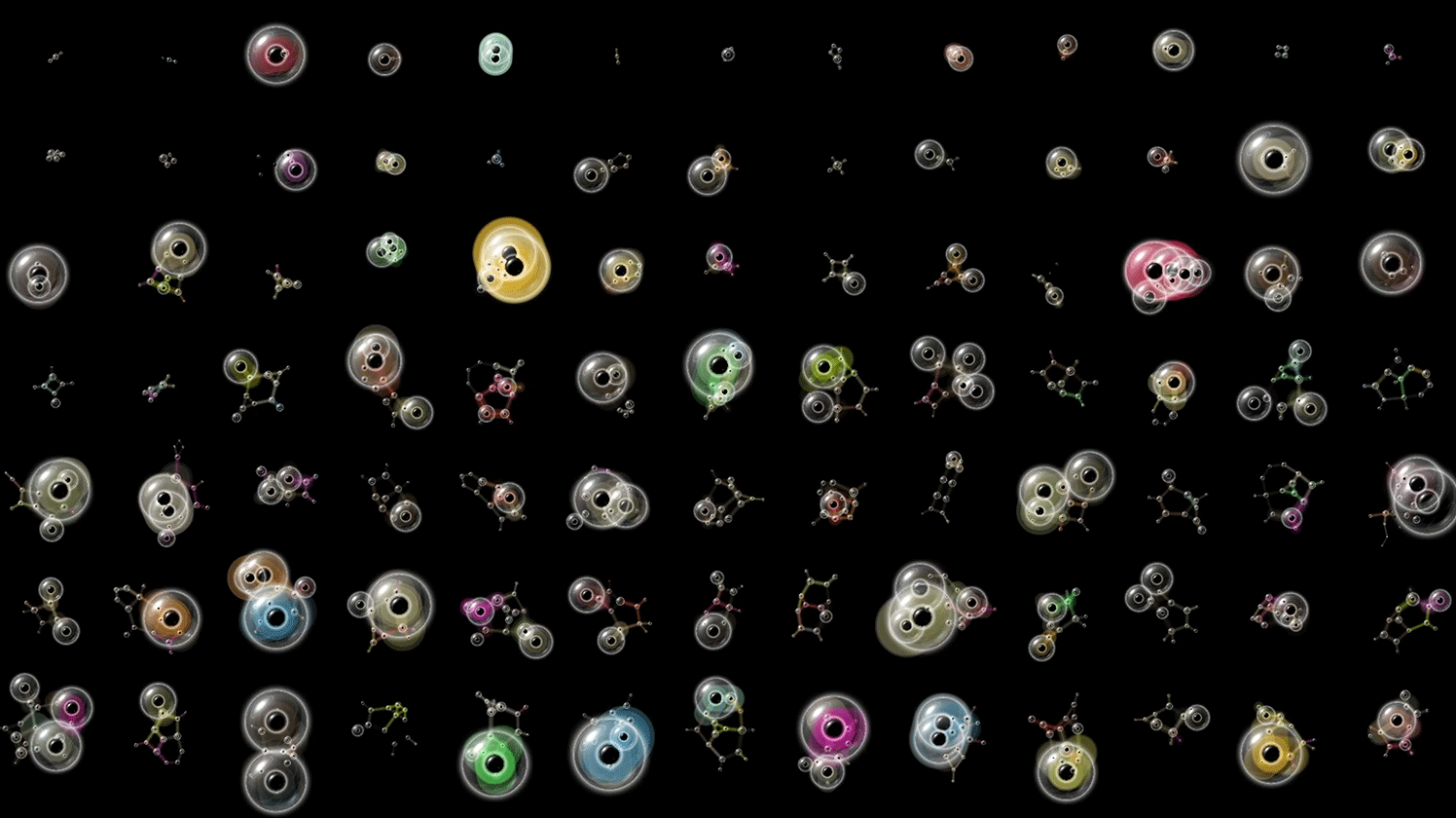
Entity #14
Custom generative software, digital video (edition of 100), sound (Tonepoet, “Infinity Machine”), NFT, and Ethereum blockchain, 2022
Private collection
In this generative software animation, dozens of artificial creatures resembling microorganisms live and die in an imagined virtual environment. To create Entity, Jared Tarbell used concepts from the field of artificial life (or ALife), a research area that studies the fundamental processes of living systems by using computer models and simulations to recreate biological phenomena.
Tarbell’s generative system is programmed to re-create lifelike properties and naturalistic individual and group behaviors. The virtual life forms are born, interact with one another, merge to become more complex organisms, and eventually experience entropy, decay, and even death. Then, the cycle begins again. Simple rules within the system give rise to complex, emergent behaviors (new behaviors that arise from interactions among the parts of a complex entity). This creates an unpredictable choreography that produces new results each time.
A subfield of artificial intelligence that uses generative models trained on large data sets to create new content—text, images, music, or videos—by mimicking the underlying structures, patterns, and styles of what it was trained on. Popular commercial generative AI tools like ChatGPT, Dall-E, and Midjourney use a chatbot feature where users can prompt the AI system using natural language rather than code. These large-scale systems are trained using trillions of data points collected from the internet and are controversial for the way they appropriate (and imitate) existing intellectual property and for their energy usage and environmental impact.
The study and creation of computer simulations that mimic living systems and biological processes. A-Life uses digital environments to model how organisms evolve, reproduce, adapt,
and interact, creating virtual ecosystems where artificial creatures can display lifelike behaviors.
When simple elements interact to create complex behaviors or patterns that could not be predicted from the individual components alone. It’s how ant colonies organize without a leader, how consciousness arises from neurons, or how water molecules create waves: Something new emerges from simpler parts interacting.